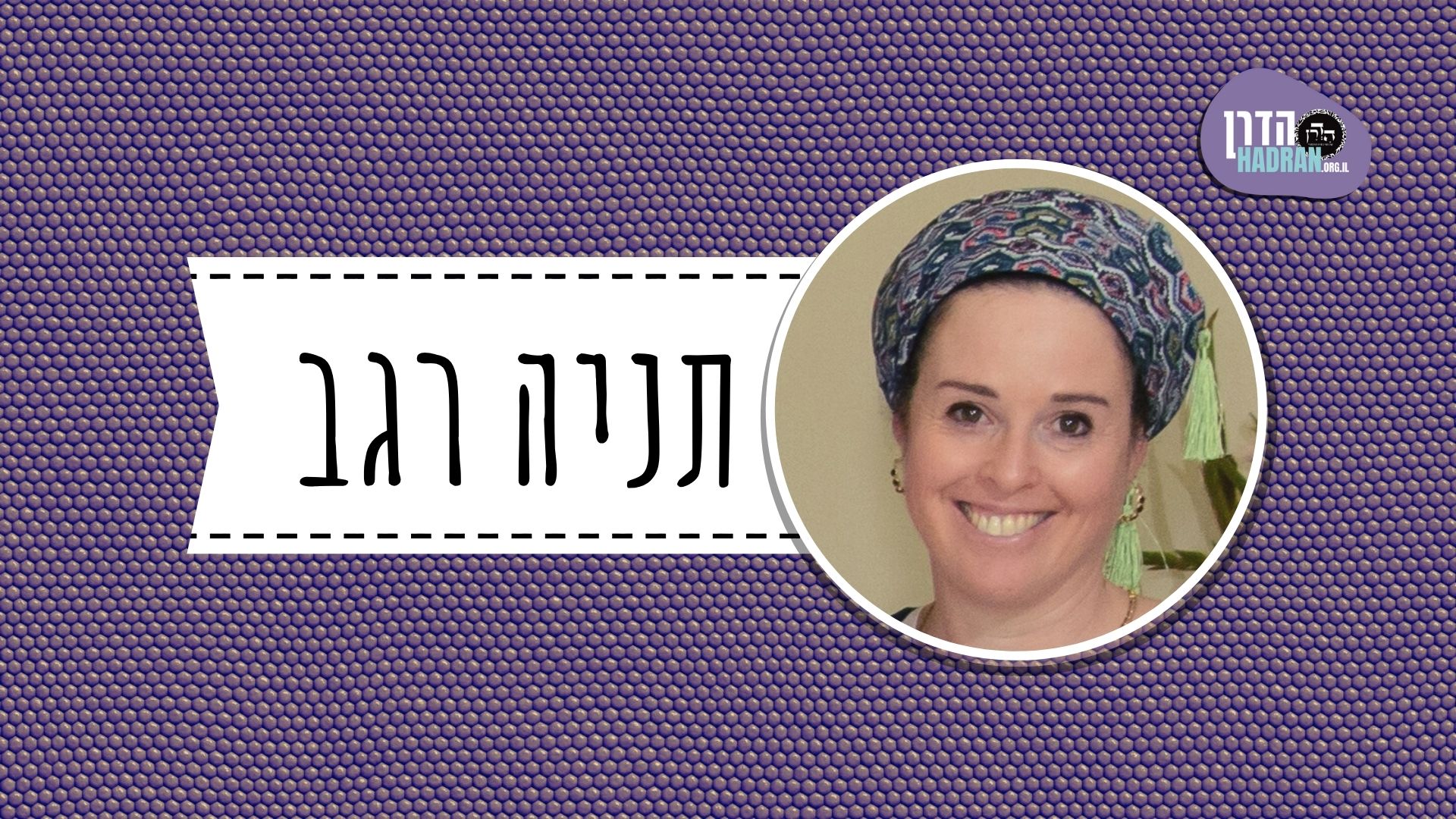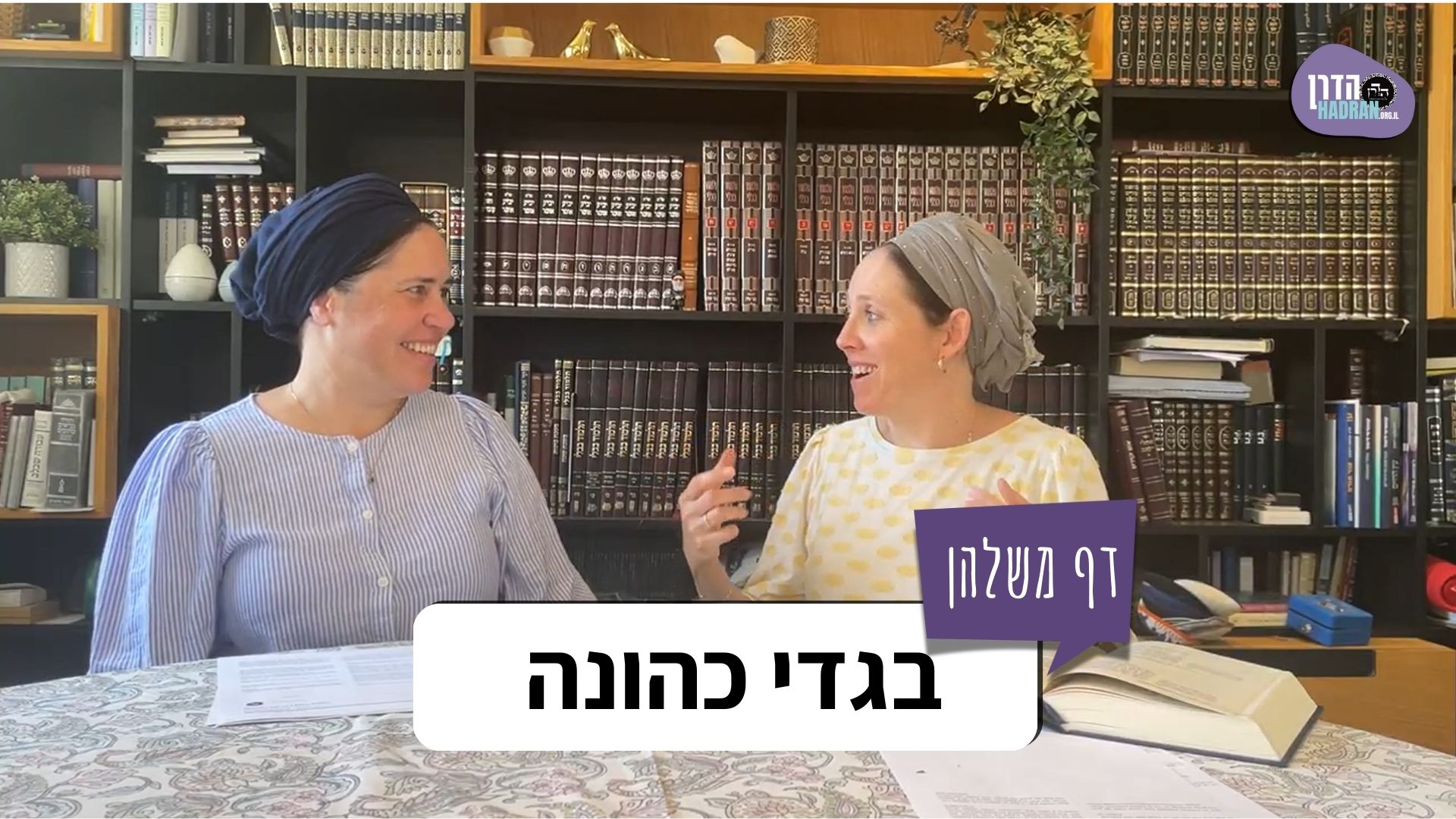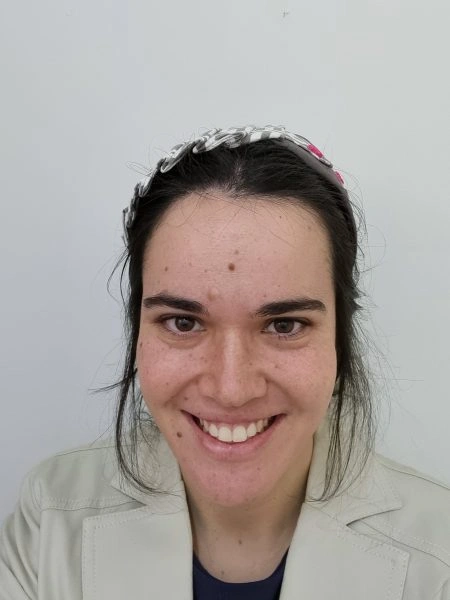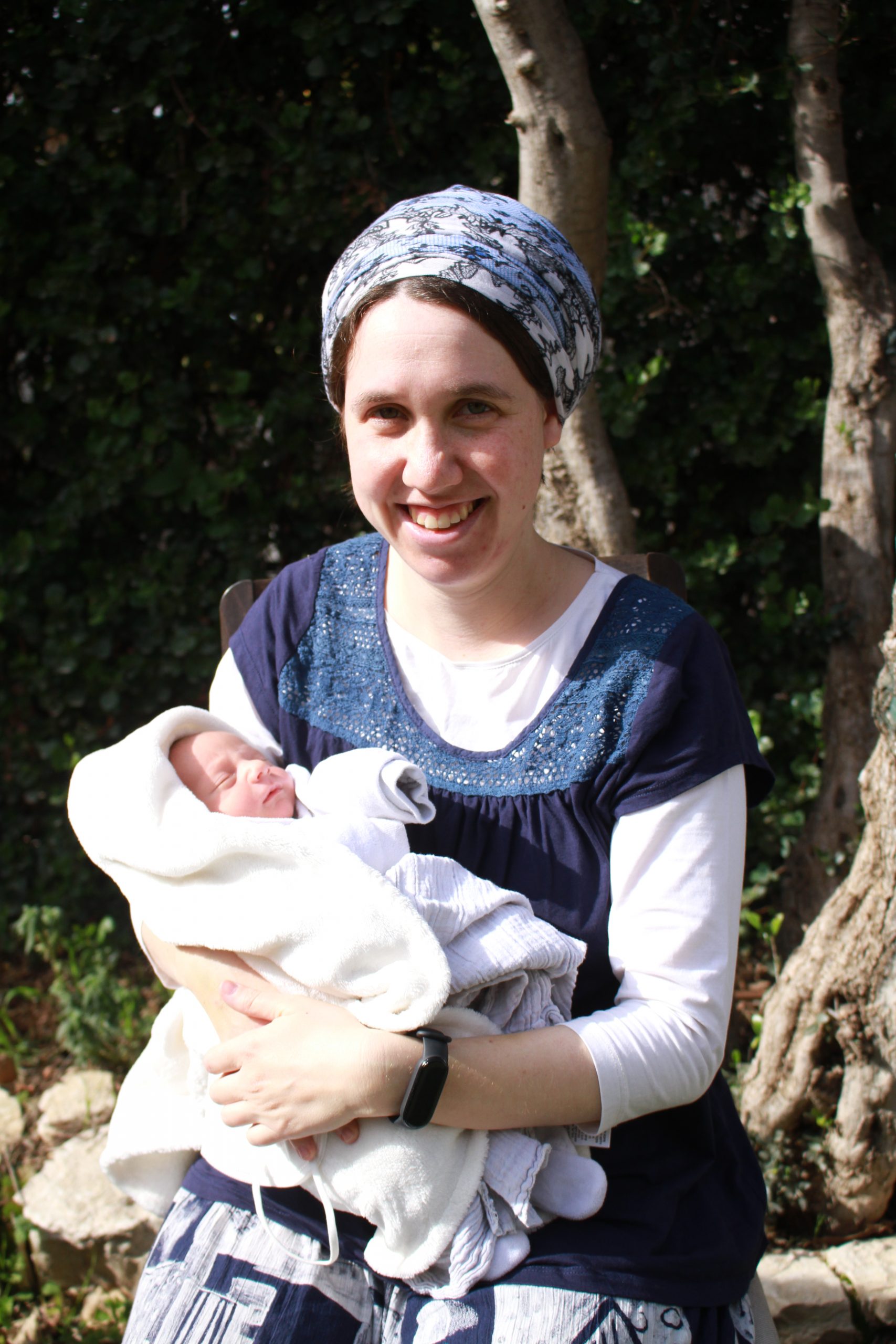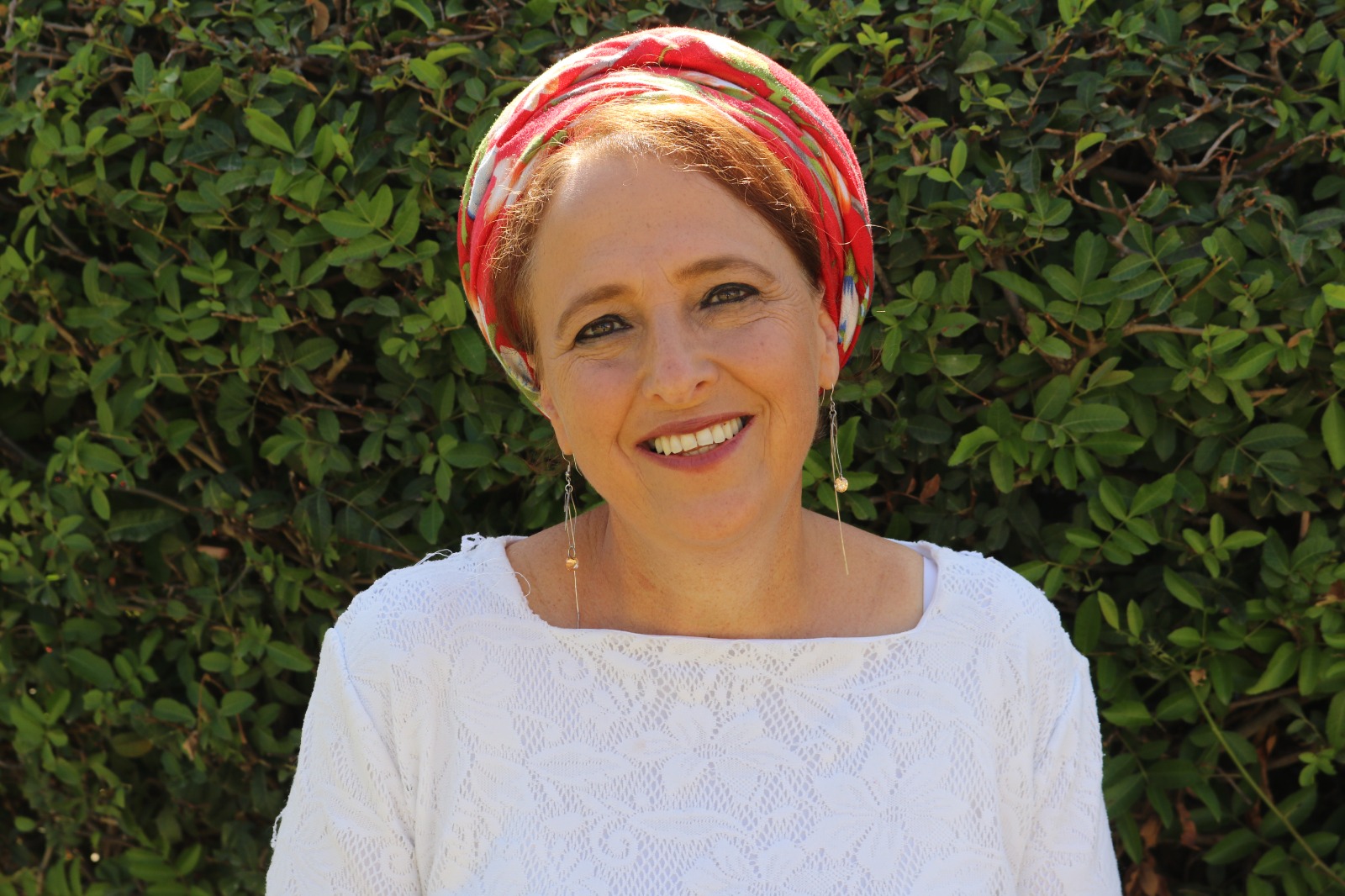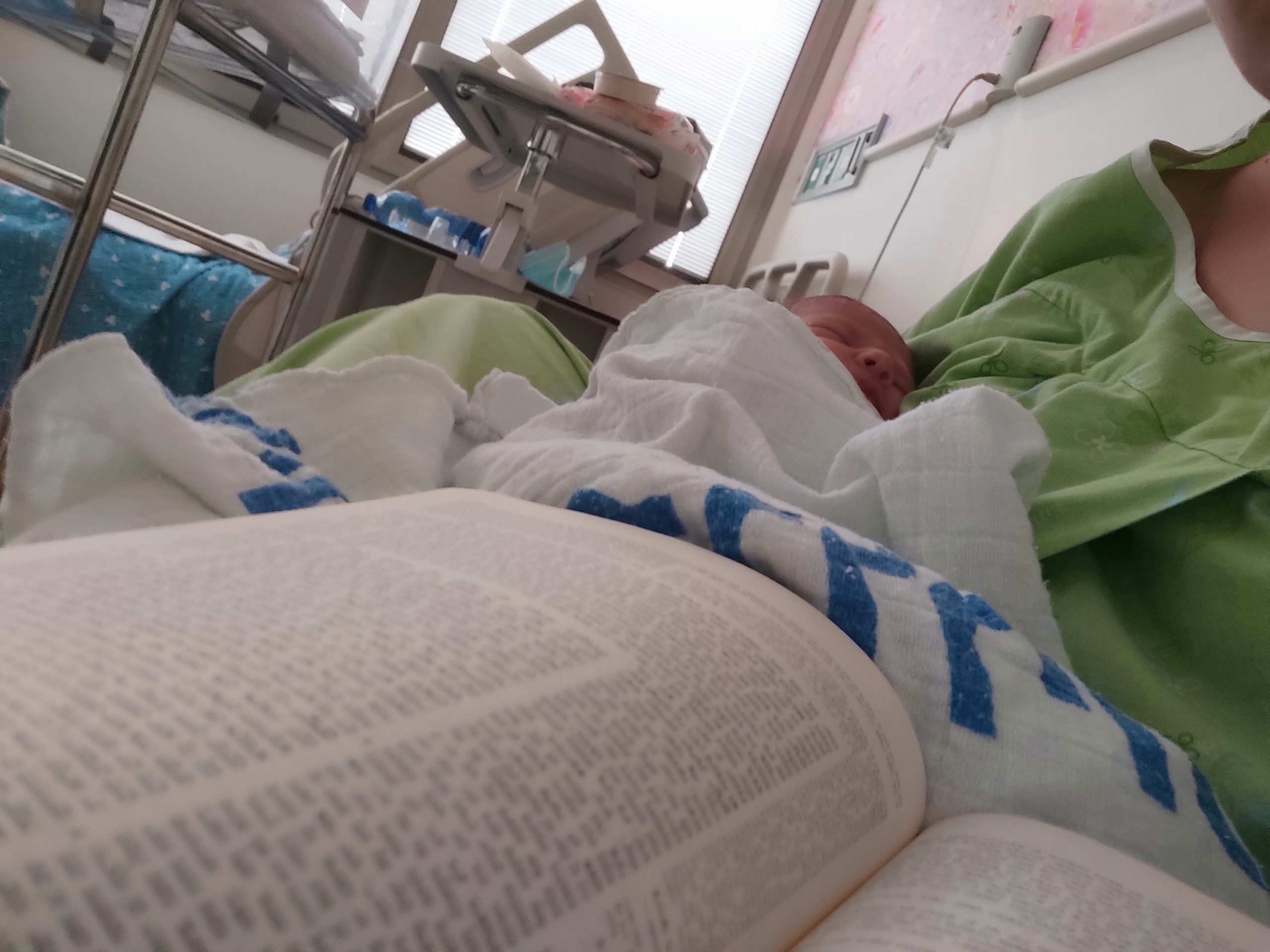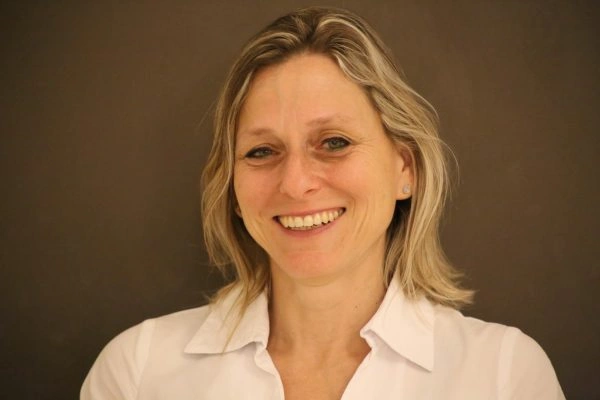מסכת זבחים
מסכת זבחים מוקדש ע”י אסתר קרמר לע”נ אביה מני גרוס.
הלימוד השבוע מוקדש ע”י רוברט ופאולה כהן לע”נ יוסף בן משה הכהן ז”ל. יוסף היה חזן שאהב מאוד לשיר, עבד קשה בחייו והיה מאוד מסור למשפחתו ולקהילה.
רוצה להקדיש שיעור?

תקציר
בהמשך לפסיקתו של עולא, שלפיה הולכת הדם ללא תזוזת רגליים אינה נחשבת הולכה, הגמרא בוחנת האם ניתן לתקן מצב שבו ההולכה נעשתה מלכתחילה ללא תזוזת רגליים. הניסיון הראשון להוכיח שניתן לתקן זאת מובא מן המשנה בזבחים דף לב, אך ההוכחה נדחית. לאחר מכן מובאת ראיה חד-משמעית מדבריו של עולא בשם רבי יוחנן, הקובעת שהפגם אינו ניתן לתיקון. רב נחמן מקשה על עולא שתי קושיות מהמשניות בזבחים דפים לב וכה. הקושיה הראשונה נענית, אך לא באופן משכנע, ואילו השנייה נותרת ללא מענה.
הגמרא מציעה פירוש חדש למחלוקת שבין רבי שמעון לחכמים במשנתנו בנוגע להולכה. לפי פירוש זה, כאשר רבי שמעון פוסק שכוונה פסולה בעת ההולכה אינה פוסלת את הקרבן, הוא מתייחס דווקא להולכה שנעשית ללא תזוזת רגליים. אולם פירוש זה זוכה ללעג מצד חכמי ארץ ישראל. בתחילה הגמרא מסבירה את הלעג בכך שלפי רבי שמעון, לא תיתכן כלל פסילה בכוונה פסולה בעת הזאת דם חטאת העוף, למרות הידוע שכוונה פסולה בעת ההזאה יכולה לפסול. הסבר זה נדחה, ומובא נימוק משכנע יותר: דבריו של רבי שמעון במשנה מבהירים שהוא דיבר על הולכה ברגליים. הוא מסביר שהולכה עשויה להיות מיותרת, משום שניתן לשחוט את הקרבן סמוך למזבח. רק הולכה ברגליים נחשבת מיותרת, שכן גם כאשר הקרבן נשחט סמוך למזבח, צריך להעביר את הדם אליו ביד.
הגמרא דנה במקרה שבו זר הוליך את הדם למזבח, ולאחר מכן כהן החזירו למקומו המקורי והוליכו כראוי. יש מחלוקת האם סדר פעולות זה פוסל את הקרבן או מכשירו. במקרה הפוך, שבו כהן הוליך את הדם, וזר החזירו למקומו ואז הוליכו שוב, יש מחלוקת האם מקרה זה דומה לקודם. רב שימי בר אשי מקשר בין שני המקרים: מי שמתיר במקרה הראשון אוסר בשני, ולהפך, בהתאם לשאלה האם הפעולה הראשונה או האחרונה היא הקובעת. רבא, לעומת זאת, אינו מקשר בין המקרים, וטוען שבשניהם המקרה השני פסול, שכן מרגע שהדם הורחק מהמזבח, יש להחזירו באופן כשר – כלומר, על ידי כהן.
רב ירמיה מביא בשם רב ירמיה מדפתי, שהשאלה האם דם שהובא למזבח והורחק ממנו צריך להיות מוחזר, היא עצמה מחלוקת בין רבי אליעזר לחכמים במשנתנו. פירוש זה מבוסס על הסברו של רבא למשנה. אביי מקשה על פירוש זה מברייתא ודוחה אותו, ורבא מודה לדבריו.
המשנה מונה מקרים שונים שבהם טיפול בדם על ידי אדם שאינו ראוי לעבודת המקדש פוסל את הקרבן. הדוגמה הראשונה היא זר. מהו המקור לכך? אפשרות אחת היא ללמוד זאת מויקרא פרק כב פסוקים ב–ג, ואפשרות נוספת היא קל וחומר מכהן בעל מום.
כלים
מסכת זבחים
מסכת זבחים מוקדש ע”י אסתר קרמר לע”נ אביה מני גרוס.
הלימוד השבוע מוקדש ע”י רוברט ופאולה כהן לע”נ יוסף בן משה הכהן ז”ל. יוסף היה חזן שאהב מאוד לשיר, עבד קשה בחייו והיה מאוד מסור למשפחתו ולקהילה.
כלים
העמקה
רוצה להבין מה באמת קורה מתחת לפני השטח של הסוגיה?
שיעורים, פודקאסטים והרחבות של מיטב המורות שלנו יפתחו לך עוד זוויות וכיווני חשיבה.
חדשה בלימוד הגמרא?
זה הדף הראשון שלך? איזו התרגשות עצומה! יש לנו בדיוק את התכנים והכלים שיעזרו לך לעשות את הצעדים הראשונים ללמידה בקצב וברמה שלך, כך תוכלי להרגיש בנוח גם בתוך הסוגיות המורכבות ומאתגרות.
פסיפס הלומדות שלנו
גלי את קהילת הלומדות שלנו, מגוון נשים, רקעים וסיפורים. כולן חלק מתנועה ומסע מרגש ועוצמתי.
זבחים טו
אֶפְשָׁר לְתַקּוֹנַהּ אוֹ לָא אֶפְשָׁר לְתַקּוֹנַהּ?
The Gemara asks: If the blood was conveyed by hand, is it possible to correct it by conveying it again properly, or is it not possible to correct it, and the offering is disqualified permanently?
תָּא שְׁמַע: קִבֵּל הַכָּשֵׁר וְנָתַן לַפָּסוּל – יַחְזִיר לַכָּשֵׁר;
The Gemara suggests: Come and hear proof from the aforementioned mishna: If a priest fit for Temple service collected the blood in a vessel and gave the vessel to an unfit person standing next to the altar, the latter should return it to the fit priest. Apparently, even after the blood is conveyed in an inappropriate manner, it can be corrected.
וּנְהִי נָמֵי דְּיַחְזוֹר הַכָּשֵׁר וִיקַבְּלֶנּוּ, אִי סָלְקָא דַּעְתָּךְ לָא אֶפְשָׁר לְתַקּוֹנַהּ – אִיפְּסַלָא לַהּ!
And though one can indeed explain that the fit priest should then receive it from him, as posited above, if it enters your mind that if the blood is conveyed incorrectly it is not possible to correct it, the offering was already disqualified when the priest gave the blood to the unfit person. Taking it back is of no consequence.
מִי סָבְרַתְּ דְּקָאֵי זָר גַּוַּאי?! לָא; דְּקָאֵי זָר בָּרַאי.
The Gemara rejects this inference: Do you maintain that this is referring to a case where the non-priest is standing inside, between the fit priest and the altar? No, it is a case where the non-priest is standing outside, farther away from the altar than the priest. Therefore, when the priest gave him the blood, he was not conveying it toward the altar at all; he was moving it farther away from the altar.
אִיתְּמַר, אָמַר עוּלָּא אָמַר רַבִּי יוֹחָנָן: הוֹלָכָה שֶׁלֹּא בָּרֶגֶל – פְּסוּלָה. אַלְמָא לָא אֶפְשָׁר לְתַקּוֹנַהּ.
It was stated: Ulla says that Rabbi Yoḥanan says: Conveying the blood not by foot renders the offering unfit. Apparently, it is not possible to correct it, as otherwise Rabbi Yoḥanan would have merely stated that it is not considered conveying, as in his earlier statement (14b).
אֵיתִיבֵיהּ רַב נַחְמָן לְעוּלָּא: נִשְׁפַּךְ מִן הַכְּלִי עַל הָרִצְפָּה וַאֲסָפוֹ – כָּשֵׁר!
Rav Naḥman raised an objection to Ulla from a mishna (32a): If the blood spilled from the vessel onto the floor and one collected it from the floor, it is fit for sacrifice. Apparently, although spilling the blood on the floor constitutes a not valid conveying toward the altar, it can still be corrected after the fact.
הָכָא בְּמַאי עָסְקִינַן – כְּשֶׁיָּצָא לַחוּץ.
The Gemara explains: Here we are dealing with a case where the blood that spilled went outward, i.e., away from the altar, so it did not constitute conveying at all.
לְבָרַאי נָפֵיק לְגַוַּאי לָא עָיֵיל?! בִּמְקוֹם מִדְרוֹן. אִיבָּעֵית אֵימָא: בְּגוּמָּא. וְאִיבָּעֵית אֵימָא: בִּסְמִיכָא.
The Gemara asks: Can spilled blood go outward and not come inward? Clearly, spilled blood spreads to all sides. The Gemara answers: It is a case where the blood spilled on an inclined plane, and it therefore spilled only outward, away from the altar. And if you wish, say instead that it spilled into a hole in the ground, so it did not spread in any direction. And if you wish, say instead that it is a case where the blood is thick, so it did not spread in all directions.
וְאִיכְּפַל תַּנָּא לְאַשְׁמוֹעִינַן כֹּל הָנֵי?! וְעוֹד, אַדְּתָנֵי בְּאִידַּךְ פִּירְקִין: נִשְׁפַּךְ עַל הָרִצְפָּה וַאֲסָפוֹ – פָּסוּל; לִיפְלוֹג בְּדִידֵיהּ: בַּמֶּה דְּבָרִים אֲמוּרִים – כְּשֶׁיָּצָא לַחוּץ, אֲבָל נִכְנַס לִפְנִים – פָּסוּל! תְּיוּבְתָּא.
The Gemara asks: But did the tanna go to all that trouble [ikhpal] just to teach us all these unlikely cases? And furthermore, rather than teaching in another chapter (see 25a) that if the blood spilled from the animal’s neck onto the floor and one collected it in a vessel from the floor it is unfit, let the mishna teach a distinction within the case where the blood spilled from the vessel itself: In what case is this statement, that the blood is fit, said? In a case where the spilled blood went outward, away from the altar, but if it came inward it is unfit. The Gemara concludes: This is a conclusive refutation; if the blood is conveyed in a not valid manner, it can be corrected.
אִתְּמַר: הוֹלָכָה שֶׁלֹּא בָּרֶגֶל – מַחְלוֹקֶת רַבִּי שִׁמְעוֹן וְרַבָּנַן. בְּהוֹלָכָה רַבָּתִי – דְּכוּלֵּי עָלְמָא לָא פְּלִיגִי דִּפְסוּלָה, כִּי פְּלִיגִי – בְּהוֹלָכָה זוּטַרְתִּי.
§ It was stated: The dispute in the mishna (13a) between Rabbi Shimon and the Rabbis as to whether improper intent while conveying the blood disqualifies the offering is only with regard to conveying the blood not by foot. With regard to greater conveying, i.e., conveying the blood by moving the feet, everyone agrees that if one performs it with prohibited intent, the offering is unfit. When they disagree, it is with regard to lesser conveying, i.e., conveying the blood by hand without moving the feet, in a case where the offering was slaughtered next to the altar.
מַחֲכוּ עֲלַהּ בְּמַעְרְבָא: אֶלָּא חַטַּאת הָעוֹף, דִּפְסוּלָה בָּהּ מַחְשָׁבָה – לְרַבִּי שִׁמְעוֹן הֵיכִי מַשְׁכַּחַתְּ לַהּ? אִי דְּחַשֵּׁיב עֲלַהּ מִקַּמֵּי דְּלִיפּוֹק דָּם – לָא כְּלוּם הִיא; וְאִי בָּתַר דִּנְפַק דָּם – אִיתְעֲבִידָא לֵיהּ מִצְוָתוֹ!
They laughed at this statement in the West, Eretz Yisrael, saying: But if so, one encounters difficulty with regard to a bird sin offering, which is killed through pinching its nape on the altar and whose blood is sprinkled directly from its neck. It is known that if one sprinkled its blood with prohibited intent, the offering is unfit. And according to Rabbi Shimon, who holds that prohibited intent while conveying the blood by hand does not disqualify the offering, how can you find these circumstances? If the priest has prohibited intent with regard to the offering before the blood comes out of the bird, this intent is nothing, since his waving it is like conveying by hand. And if he has such intent after the blood came out, its mitzva was already performed, as the blood already reached the altar.
מַאי קוּשְׁיָא? דִּלְמָא מִדְּפָרֵישׁ וְעַד דִּמְטָא לְמִזְבֵּחַ –
The Gemara asks: What is the difficulty? Perhaps the offering is disqualified due to prohibited intent from the moment the blood leaves the bird until the moment it reaches the altar.
דְּהָא בְּעָא מִינֵּיהּ רַבִּי יִרְמְיָה מֵרַבִּי זֵירָא: הָיָה מַזֶּה, וְנִקְטְעָה יָדוֹ שֶׁל מַזֶּה עַד שֶׁלֹּא הִגִּיעַ דָּם לַאֲוִיר הַמִּזְבֵּחַ, מַהוּ? וַאֲמַר לֵיהּ: פְּסוּלָה. מַאי טַעְמָא? ״וְהִזָּה… וְנָתַן״ בָּעֵינַן.
This is as Rabbi Yirmeya asked Rabbi Zeira: If the priest was sprinkling the blood, and the hand of the one sprinkling was severed before the blood reached the airspace of the altar, what is the halakha? Is the sprinkling not valid since it was performed by a blemished priest, or is it valid because the blood left the bird before he was blemished? And Rabbi Zeira said to him: It is not valid. What is the reason? We require that the verse: “And sprinkle of the blood” (Leviticus 4:6), be fulfilled in the same manner as the verse that follows it: “And the priest shall place of the blood upon the corners of the altar” (Leviticus 4:7), namely, that the blood reach the altar. Therefore, the blood can be disqualified anytime until it reaches the altar, whether through the priest becoming blemished or through prohibited intent.
כִּי אֲתוֹ רַב פָּפָּא וְרַב הוּנָא בְּרֵיהּ דְּרַב יְהוֹשֻׁעַ מִבֵּי רַב, אָמְרִי, הַיְינוּ חוּכָא: וּבְהוֹלָכָה רַבָּתִי לָא פְּלִיגִי?! וְהָא כִּי פְּלִיגִי – בְּהוֹלָכָה רַבָּתִי פְּלִיגִי!
When Rav Pappa and Rav Huna, son of Rav Yehoshua, came from the study hall, they said: This is the reason for the laughter of the scholars of Eretz Yisrael: With regard to greater conveying, i.e., conveying by foot, can one say Rabbi Shimon and the Rabbis do not disagree? Clearly, when they disagree in the mishna, they disagree with regard to greater conveying, as Rabbi Shimon reasons that conveying is a dispensable rite. Only conveying by foot is dispensable, since even if the offering is slaughtered next to the altar, the priest will need to move its blood somewhat with his hand.
אֶלָּא בְּהוֹלָכָה זוּטַרְתִּי – כּוּלֵּי עָלְמָא לָא פְּלִיגִי דְּלָא פָּסְלָה; כִּי פְּלִיגִי – בְּהוֹלָכָה רַבָּתִי.
Rather, the statement under discussion should be emended to say: With regard to lesser conveying, i.e., conveying the blood by hand, everyone agrees that it does not disqualify the offering due to prohibited intent. When they disagree, it is with regard to greater conveying, i.e., conveying the blood for a distance by foot. Rabbi Shimon holds that improper intent even then does not disqualify the offering, as the rite is dispensable, and the Rabbis maintain that it does disqualify it.
הוֹלִיכוֹ זָר, וְהֶחְזִירוֹ כֹּהֵן וְחָזַר וְהוֹלִיכוֹ – פְּלִיגִי בַּהּ בְּנֵי רַבִּי חִיָּיא וְרַבִּי יַנַּאי; חַד אָמַר כָּשֵׁר, וְחַד אָמַר פָּסוּל. מָר סָבַר: אֶפְשָׁר לְתַקּוֹנַהּ, וּמָר סָבַר: לָא אֶפְשָׁר לְתַקּוֹנַהּ.
§ If a non-priest conveyed the blood to the altar, and a priest returned it to its original location, and a priest then conveyed it again to the altar, the sons of Rabbi Ḥiyya and Rabbi Yannai disagree with regard to the halakha. One says that the offering is fit, and one says it is unfit. This is because one Sage holds that if the blood is conveyed improperly, it is possible to correct it, and one Sage holds that it is not possible to correct it.
הוֹלִיכוֹ כֹּהֵן וְהֶחְזִירוֹ, וְחָזַר וְהוֹלִיכוֹ זָר – אָמַר רַב שִׁימִי בַּר אָשֵׁי: לְדִבְרֵי הַמַּכְשִׁיר – פָּסוּל, לְדִבְרֵי הַפּוֹסֵל – מַכְשִׁיר.
If a priest conveyed it to the altar, and then returned it, and a non-priest then conveyed it again, Rav Shimi bar Ashi says: According to the statement of the one who deems the offering fit in the previous case, where a non-priest conveyed it the first time and a priest conveyed it the second time, in this case the offering is unfit, as a non-priest conveyed it the second time. According to the statement of the one who deems the offering unfit in the previous case, as a non-priest conveyed it the first time, in this case, where a priest conveyed it the first time, he deems the offering fit.
רָבָא אָמַר: אַף לְדִבְרֵי הַפּוֹסֵל פָּסוּל; מַאי טַעְמָא? דְּהָא צָרִיךְ
Rava says: Even according to the statement of the one who deems the offering unfit in a case where a non-priest conveyed it the first time, it is unfit in this case as well, where a priest conveyed it the first time and a non-priest conveyed it the second time. What is the reason? Because after the blood is returned to its original location, it is necessary
לְאַמְטוֹיֵיהּ.
to bring it again. Therefore, the second conveying must also be performed by a priest.
אֲמַר לֵיהּ רַבִּי יִרְמְיָה לְרַב אָשֵׁי, הָכִי אָמַר רַב יִרְמְיָה מִדִּיפְתִּי: ״הָא צָרִיךְ לְאַמְטוֹיֵיהּ״ – מַחְלוֹקֶת רַבִּי אֶלְיעָזָר וְרַבָּנַן.
Rabbi Yirmeya said to Rav Ashi: This is what Rav Yirmeya of Difti said when he stated that it is necessary to bring the blood to the altar again, and that therefore the second conveying is considered a sacrificial rite and must be performed by a priest: He meant that this principle is subject to a dispute between Rabbi Eliezer and the Rabbis.
דִּתְנַן, רַבִּי אֶלְיעָזָר אוֹמֵר: הַמְהַלֵּךְ בְּמָקוֹם שֶׁצָּרִיךְ לְהַלֵּךְ – מַחְשָׁבָה פּוֹסֶלֶת. מָקוֹם שֶׁאֵין צָרִיךְ לְהַלֵּךְ – אֵין מַחְשָׁבָה פּוֹסֶלֶת.
This is as we learned in the mishna (13a): Rabbi Eliezer says: With regard to one who conveys the blood in a situation where he is required to convey it, prohibited intent while conveying it disqualifies the offering. If he conveys the blood in a situation where he is not required to convey it, prohibited intent while conveying it does not disqualify the offering.
וְאָמַר רָבָא, הַכֹּל מוֹדִים: קִבְּלוֹ בַּחוּץ וְהִכְנִיסוֹ בִּפְנִים – זֶהוּ הִילּוּךְ שֶׁצָּרִיךְ לְהַלֵּךְ. קִבְּלוֹ בִּפְנִים וְהוֹצִיאוֹ לַחוּץ – זֶהוּ הִילּוּךְ שֶׁאֵין צָרִיךְ לְהַלֵּךְ.
And Rava says: All of the tanna’im concede that if one collected the blood outside, i.e., at a distance from the altar, and he brought it inside, close to the altar, that is considered necessary conveying. If one collected it inside and took it outside, that is considered unnecessary conveying.
לֹא נֶחְלְקוּ אֶלָּא כְּשֶׁהִכְנִיסוֹ וְחָזַר וְהוֹצִיאוֹ; מָר סָבַר: הָא צָרִיךְ לְאַמְטוֹיֵיהּ, וּמָר סָבַר: לָאו כְּהִילּוּךְ הַצָּרִיךְ לַעֲבוֹדָה דָּמֵי.
They disagree only with regard to a case where he brought it in and took it out again. One Sage, the first tanna, holds that since it is necessary to bring it back to the altar, it is considered necessary conveying, and prohibited intent while performing it disqualifies the offering. And one Sage, Rabbi Eliezer, holds that since the rite of conveying to the altar was already performed, it is not considered conveying that is necessary for the sacrificial service, and prohibited intent while performing it does not disqualify the offering. Apparently, the same dispute applies to a case where a non-priest conveyed the blood the second time.
אֵיתִיבֵיהּ אַבָּיֵי, רַבִּי אֶלְיעָזָר אוֹמֵר: הַמְהַלֵּךְ מָקוֹם שֶׁצָּרִיךְ לְהַלֵּךְ – מַחְשָׁבָה פּוֹסֶלֶת. כֵּיצַד? קִבְּלוֹ בַּחוּץ וְהִכְנִיסוֹ לִפְנִים – זֶהוּ הִילּוּךְ שֶׁצָּרִיךְ לְהַלֵּךְ. קִבְּלוֹ בִּפְנִים וְהוֹצִיאוֹ לַחוּץ – זֶהוּ הִילּוּךְ שֶׁאֵין צָרִיךְ לֵילֵךְ. וְהָא חָזַר וְהִכְנִיסוֹ – הִילּוּךְ שֶׁצָּרִיךְ לְהַלֵּךְ הוּא!
Abaye raised an objection to Rava’s interpretation from a baraita: Rabbi Eliezer says: With regard to one who conveys the blood in a situation where he is required to convey it, prohibited intent while conveying it disqualifies the offering. How so? If one collected the blood outside, at a distance from the altar, and he brought it inside, close to the altar, that is considered necessary conveying. If one collected it inside and took it outside, that is considered unnecessary conveying. And consequently, one infers that if he brought it in again, it is considered necessary conveying even according to Rabbi Eliezer.
אֲמַר לֵיהּ: אִי תַּנְיָא, תַּנְיָא.
Rava said to him: If this baraita is taught, it is taught, and I cannot disagree with it.
הֲדַרַן עֲלָךְ כׇּל הַזְּבָחִים
מַתְנִי׳ כׇּל הַזְּבָחִים שֶׁקִּבְּלוּ דָּמָן זָר, אוֹנֵן, טְבוּל יוֹם, וּמְחוּסַּר כִּפּוּרִים, וּמְחוּסַּר בְּגָדִים, שֶׁלֹּא רָחַץ יָדַיִם וְרַגְלַיִם, עָרֵל, טָמֵא, יוֹשֵׁב, עוֹמֵד עַל גַּבֵּי כֵּלִים, עַל גַּבֵּי בְּהֵמָה, עַל גַּבֵּי רַגְלֵי חֲבֵרוֹ – פָּסַל.
MISHNA: With regard to all slaughtered offerings, if the one who collected their blood was a non-priest; or a priest who was an acute mourner, i.e., one whose relative has died and has not yet been buried; or one who was ritually impure who immersed that day and is waiting for nightfall for the purification process to be completed; or one who has not yet brought an atonement offering, e.g., a zav or leper after the seventh day of the purification process; or a priest lacking the requisite priestly vestments; or one who did not wash his hands and feet from the water in the Basin prior to performing the Temple service; or an uncircumcised priest; or a ritually impure priest; or if the one who collected the blood was sitting; or if he was standing not on the floor of the Temple but upon vessels, or upon an animal, or upon the feet of another, he has disqualified the offering.
קִבֵּל בִּשְׂמֹאל – פָּסַל. רַבִּי שִׁמְעוֹן מַכְשִׁיר.
If he collected the blood with his left hand, he disqualified the blood for offering. In this last case, Rabbi Shimon deems it fit.
גְּמָ׳ זָר מְנָלַן? דְּתָנֵי לֵוִי: ״דַּבֵּר אֶל אַהֲרֹן וְאֶל בָּנָיו לֵאמֹר, וְיִנָּזְרוּ מִקׇּדְשֵׁי בְּנֵי יִשְׂרָאֵל וְגוֹ׳״ – ״בְּנֵי יִשְׂרָאֵל״ לְמַעוֹטֵי מַאי? אִילֵּימָא לְמַעוֹטֵי נָשִׁים – קׇרְבַּן נָשִׁים בְּטוּמְאָה קָרֵב?!
GEMARA: From where do we derive that a non-priest who performs sacrificial rites disqualifies an offering? As Levi teaches: The verse states: “Speak to Aaron and to his sons, that they separate themselves from the sacred items of the children of Israel [benei Yisrael]” (Leviticus 22:2). Levi continues: “The children of Israel” serves to exclude what from the prohibition against sacrificing an offering in a state of impurity? If we say that it serves to exclude the offerings of women, and the verse states “benei” in the masculine to indicate sons but not daughters, is it conceivable that an offering of women is sacrificed in a state of impurity?
אֶלָּא לְמַעוֹטֵי גּוֹיִם? הַשְׁתָּא צִיץ לָא מְרַצֵּה, דְּאָמַר מָר: וּבַגּוֹיִם – בֵּין בְּשׁוֹגֵג בֵּין בְּמֵזִיד לֹא הוּרְצָה; בְּטוּמְאָה קָרֵב?!
Rather, perhaps it serves to exclude offerings of gentiles. Now, if the frontplate of the High Priest, which normally effects acceptance for offerings of Jews sacrificed in a state of impurity, does not effect acceptance for the offerings of gentiles, as the Master said: And with regard to an offering of gentiles, whether it was offered in a state of impurity unintentionally or intentionally, it was not accepted; can it be, then, that such an offering is sacrificed in a state of impurity ab initio?
אֶלָּא הָכִי קָאָמַר: ״וְיִנָּזְרוּ מִקׇּדְשֵׁי, בְנֵי יִשְׂרָאֵל וְלֹא יְחַלְּלוּ״.
Rather, this is what the verse is saying, i.e., it should be read in the following manner: That they separate themselves from the sacred items; the children of Israel, and that they not profane My holy name. That is, the verse states that they, the priests, must separate themselves from the sacred items when they are ritually impure, and that the children of Israel must separate themselves from performing the sacrificial rites, so that they will not profane, i.e., disqualify, the offerings.
דְּבֵי רַבִּי יִשְׁמָעֵאל תָּנָא, אָתְיָא בְּקַל וָחוֹמֶר מִבַּעַל מוּם: מָה בַּעַל מוּם, שֶׁאוֹכֵל – אִם עָבַד חִילֵּל;
A tanna of the school of Rabbi Yishmael taught: The halakha of a non-priest who performs the sacrificial rites is derived via an a fortiori inference from the case of a blemished priest: Just as with regard to a blemished priest, who may partake of the meat of offerings, if he performed sacrificial rites he has nevertheless desecrated the service,
